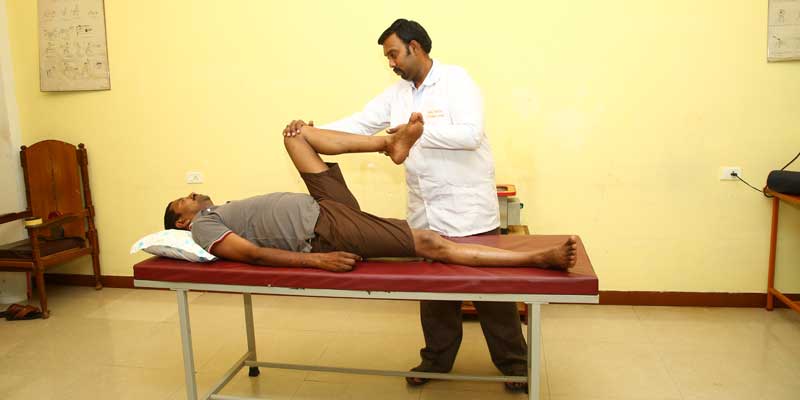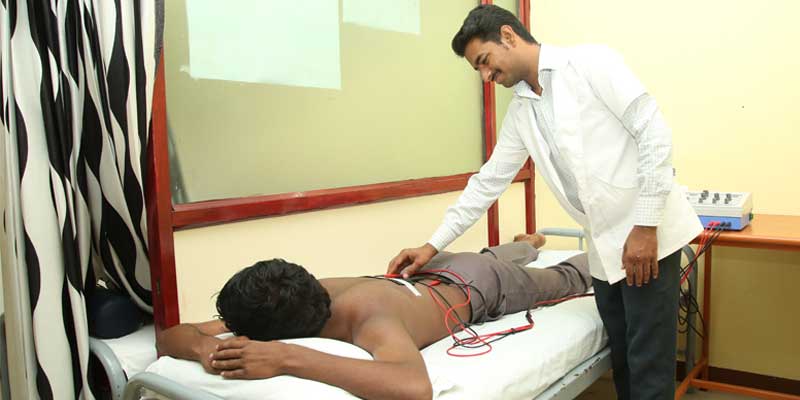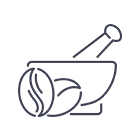PHYSIOTHERAPY
Physiotherapy is a dynamic profession which uses various treatment techniques to restore mobility and maximizing potential. It is also a branch of rehabilitative health that uses specially designed exercises and modern equipments to help patients regain or to improve the physical abilities.
Eminent physicians like Hippocrates, founder of modern medicine and Gallen are believed to be the first practitioners of physiotherapy, manual therapy and cold therapy to treat people in 460 B.C. In 1864, Gustav Zander, a Swedish doctor invented an exercise machine to help the patient to perform exercises. Physical therapy originated from massage manipulation by nurses at the end of 19th century. In 1894, four nurses at Great Britain formed a Chartered Society of Physiotherapy.
Physical therapy specially begins with physical assessment of patient condition. This typically includes patient medical history and examination. The assessment stage may involve diagnostic test to better evaluate the patient condition and develop an effective treatment plan. Once assessment is complete then physician looks out at the results to determine the progress.
Treatment is guided with clinical assessment catering to the needs of the patients. Physical therapy may employ various physiotherapeutic treatment options which include neuromuscular, skeletal conditions, cardio pulmonary efficiencies, pain management and certain integumentary techniques like radiation, heat, cold, exercise, current waves (Ultrasound therapy, TENS, muscle stimulation, iontophoresis therapy, galvanism and IFT).
There are 3 main fields of practice which the discipline of physiotherapy includes:
- Musculoskeletal physiotherapy – accelerates healing of soft tissue injuries.
- Neuro physiotherapy – accelerates to retain the movement and function after stroke, traumatic brain injury or other nerve injuries.
- Cardio-respiratory physiotherapy – seeks to improve breathing and prevent lung infection.
Evidentially based on high quality of RCTs, strong evidence was found in favor of task oriented exercise training to restore balance and gait for the strengthening of the lower paretic limb. Strong evidence was also found for therapies that were focused on training of upper limb such as constraint induced movement therapy, treadmill trained with or without support, aerobic, external auditory rhythm, during gait. A positive effect of electrical stimulation is triggered by voluntary movement faster than non-triggered electrical waves. Triggered electrical stimulation may be more effective than non-triggered electrical waves in facilitating upper extremities, motor recovery following stroke. A long-term study of TENS may be effective in reducing prolonged soleus H and stretch reflex latencies in hemiparetic spasticity.
- Van Peppen RP, Kwakkel G, Wood-Dauphinee S, Hendriks HJ, Van der Wees PJ, Dekker J. The impact of physical therapy on functional outcomes after stroke: what’s the evidence?Clinical rehabilitation. 2004 Dec;18(8):833-62.
- Levin MF, Hui-Chan CW. Relief of hemiparetic spasticity by TENS is associated with improvement in reflex and voluntary motor functions. Electroencephalography and Clinical Neurophysiology/ Evoked Potentials Section. 1992 Apr 1;85(2):131-42.









